When the convoy-turned-occupation took hold of Ottawa, disabled people were uniquely impacted and faced particular risks.
People who required support could no longer access it; streets were no longer being cleared of snow in some areas; and sidewalks had vehicles parked on them. Public space was overrun by those whose interpretation of “freedom” left no room for social responsibility to others and treated someone else’s choice to wear a mask as a provocation.
Although police now appear to be moving in to clear the occupation, there are long-term implications stemming from what happened over the past three weeks. The Maple reached out to disabled people in Ottawa and Winnipeg, where convoy protests took place, to discuss the impact of these occupations on their lives and their thoughts about the situation.
Alexander Jasper-Jay is a trans man who grew up in Ottawa's suburbs. He said he moved to the downtown area for accessibility reasons after developing a disability in his 20s.
“You could throw a stone from my building and hit a road closure caused by the convoy,” he explained, adding “you can hear the horns from inside my apartment building’s thick concrete walls.”
Jasper-Jay has a medical intolerance to the cold and limited mobility. He said he requires a lot of support from his community and family to survive.
“When I moved out because my family home was no longer accessible or safe for me, I moved within the city so I could still have that support system,” Jasper-Jay explained. “Often, my family will help with things like picking up prescriptions or dropping off groceries.”
But the occupation by the convoy, he explained, cut off his ability to access this support system.
Like many disabled people across this country, Jasper-Jay can’t afford delivery services, so his family delivering medication and groceries is essential for the months-long periods when he’s unable to leave his apartment. “Frankly, I don’t know what I’m going to do,” he said.
There are other impacts as well, he added. “The mental impact of seeing so many people openly saying that their choice to not wear a mask is worth more than my life on its own is devastating.”
Jihan Abbas, a disabled sociologist who teaches disability studies and is a research associate for DAWN (Disabled Women’s Network) Canada, said the city feels more unsafe in part because of the way members of the occupation were allowed to take over and do as they wished.
“It is incredibly stressful to have this kind of hate and violence openly tolerated and allowed to spread,” said Abbas. “For those of us who are racialized it does not feel safe to know that they are all over the city and allowed to act without consequence.”

Knowing the beliefs of some of the occupation leaders has created concerns about how far they have been allowed to spread and how violent they might become. “I've listened to the deeply Islamophobic and racist comments their 'leaders' have made – I now know this city not only tolerates that but will facilitate it too,” Abbas explained. “That's a unique and scary feeling.”
Abbas lives outside the so-called “red zone” where the bulk of the occupation has been located, but close enough to have trucks interfering with traffic and to hear the fireworks and train horns, especially on weekends. She said the occupation was allowed to continually spread into residential streets, and in the process became “more entrenched and emboldened.”
“They have been allowed to do whatever they want throughout this city,” Abbas added. “When I am out in the city, it is common to see convoy vehicles driving around with their hateful signs or to get stuck in one of their 'slow rolls.’”
Slow rolls, Abbas explained, are “where they slow traffic and honk for no apparent reason and without any enforcement.”
According to Abbas, disabled people have been uniquely impacted by the occupation in ways that are not necessarily experienced or understood by the non-disabled public.
“I don't think people realize the actual freedoms that disabled people have lost – and many were already underserved and isolated,” she explained.
Examples include closures of amenities, halted deliveries and other services, worsened accessibility issues, delayed and detoured transit, an inability for home care workers to access parts of the city in a timely fashion, isolation and a persistent slew of ableist messaging.
Far-Right Messaging from the Convoy
Disabled people have recognized a familiar theme in the occupation’s messages: Eugenics, or the belief that some lives are not worth protecting. Abbas pointed out that the convoy’s demands to end the pandemic protections are acting as a vehicle to spread this larger message.
“I don't see the convoy as unexpected,” she noted. “I think this is a populist movement, rooted in white supremacy, that has finally found an issue and a moment to rally around.”
Abbas said the “wildly inconsistent” signage and actions from the occupiers and their leaders included anti-trans, anti-immigrant, anti-semitic, Islamophobic, misogynistic and anti-Black sentiments. She noted that some also engaged in the appropriation and mockery of Indigenous symbols and cultures.
“These things work together and in service of white supremacy, and ableism is also a key part of how white supremacy is upheld,” Abbas explained.
Jasper-Jay noted that in 2019, occupation organizer Pat King pushed the racist "great replacement” theory, and claimed that the “Anglo-Saxon race” has the “strongest bloodlines.”
“Unlike him, this virus doesn’t discriminate,” said Jasper-Jay. “Our bodies are all more fragile than we would like to admit and those who are sympathetic to this cause need to take a careful look around at who and what they’re supporting.”
Allen Mankewich is a disabled man living in Winnipeg with almost two decades of experience working on disability policy. In Winnipeg, a convoy with the same objectives as the Ottawa protest is still occupying a road in front of the Manitoba Legislature.
Mankewich said attention to the impact that various issues have on disabled people is something often overlooked by those on the political left. He feels this problem has been evident during the convoy protests.
Mankewich said it's important that people are talking about the white supremacy associated with the protests, “but I don't see too many people talking about how ableism underpins these ideas, and how lifting mandates is advocating eugenics as a course of action in the pandemic response.”

Ableism is so embedded in capitalism and white supremacy that it often isn’t recognized as oppression, and instead is seen as not only normal and rational, but inevitable.
A Record of Ableism Throughout the Pandemic
The occupation left disabled people fighting the overt eugenics of the convoy while also being abandoned through a more passive form of eugenics by the government.
Mankewich noted that ableism has been a problem throughout the pandemic response. He said disabled people were not properly prioritized during vaccine rollouts, and that discriminatory triage protocols for when hospitals became overwhelmed devalued disabled lives and left them at risk of being denied live-saving healthcare.
Also lacking, he continued, has been disaggregated data, proper protocols for home care workers and adequate disability benefits, which are needed to cover pandemic-related expenses.
More disturbingly, several provincial governments have in recent weeks moved towards relaxing public health restrictions, which many argue demonstrates a wanton disregard for the lives of disabled people that is tantamount to social murder.
“In general, disability has been excluded where policy decisions are made,” said Abbas, “and we can see this with the shift to return to "normal" and not-so-subtle pushes for eugenics and further marginalization.”
She added that in addition to the blatantly hateful messages and symbols displayed at the occupation, there are dog whistles and appeals to Canadian myths about individual responsibility, which underpin the recent moves by governments to relax public health rules.
“The anti-vaxx and wellness cultures have also been weaponized here to serve these interests through ideas about personal responsibility for health, and 'healthy bodies' being fine,” said Abbas. “It builds on the idea that minor public health measures that are in place to protect each other infringe on personal 'freedom.'”
Critics note that as public health and government leaders have lifted restrictions, little information has been provided about how individuals can protect themselves from an airborne virus without access to N95 masks, widely available testing, transparency about COVID infections at schools and workplaces, and proper ventilation.
Another issue, Jasper-Jay said, is the fact that no information about how to get to a testing site has been provided to those who don’t own a vehicle.
“I still don’t know how I was ever supposed to access PCR testing without putting other vulnerable people that rely on public transit at risk,” he explained.
Abbas was part of a research project that examined government responses to the pandemic.
“The pandemic has exacerbated many of the barriers and inequities that we were collectively working to dismantle pre-COVID,” she explained. “In every single way, it seems things have been made worse for disabled people, and this has in large part been accepted, and even welcomed, because of systemic ableism.”
Perhaps unsurprisingly, government responses to the occupation were no better than they had been around the pandemic.
Abbas is blunt. “I cannot think of a single support that has come from any level of government to support disabled people in Ottawa,” she explained. “Worse yet, our governments have been [bending to the demands of] this mob, our police seem to be working directly for them, allowing fuel to be transported, taking pictures with them, refusing to intervene when the community requests help.”
Police Response Criticized
The comparison between the police response to the occupation and their responses to other protests is the most striking aspect for many observers. “We know the Ottawa police can have a presence because our marginalized communities are often the target of surveillance and policing,” said Abbas.
Mankewich, who participated in a counter-protest against the convoy in Winnipeg, said “I'm not in favour of escalated actions by police, but I will note the differential response in dealing with the convoy.”
“The only person that has been arrested during this whole occupation in Winnipeg was an Indigenous person at the counter protest this past weekend, who ended up being released without charge,” he added.
Criticisms of the police response and the difference in how they have responded to the occupation should not be interpreted as calls for more policing, especially coming from the disabled community where many are abolitionists or, at minimum, support less policing, not more.
Like Mankewich, Abbas, who is an abolitionist, does not want to see police employing more heavy-handed tactics against supporters of the occupation. She explained: “Abolition is a part of disability justice because disabled bodies are surveilled and policed differently and more aggressively.”
Abbas is concerned about what methods the police might use to reassert their control over Canadian cities once the occupation and supportive protests are dispersed.
“I imagine disabled, Black, brown and Indigenous bodies will be used by the state when this is over to restore their image of law and order,” she explained. “Without any real systemic change, the same things that have shaped this situation, that have allowed for inaction from our leaders, and that will, I believe, lead to them getting some of what they want, which is hostile to disabled people, seems inevitable.”
Communities Pushing Back
Jasper-Jay said his recent experiences with the occupation have moved him further along the path of abolition. He said that for some time, he supported abolition in principle, but felt that such a goal would be nearly impossible under current social conditions.
However, he explained, “watching the people at Billing’s Bridge as well as Metcalfe and Argyle take a stand for our community and make far more progress than our police could in 17 days has made me seriously question that position.”
These were memorable moments of grassroots people power. Early in the occupation, a video circulated showing a lone woman standing in front of a truck that was attempting to drive down her street in Ottawa. After occupiers took food and harassed workers at the Shepherds of Good Hope homeless shelter, it received $750,000 in donations.
Last weekend, a group of community members and labour activists blocked a convoy of vehicles trying to join the occupation at Parliament Hill. These counter protesters were sent pizzas and coffees by their supporters.
Many others have tirelessly advocated to keep people supported and to send out messages of solidarity.
“People often forget that they do actually have the power to effect change, but [the counter protest last weekend] started with a small group of dog walkers and grew to thousands,” said Jasper-Jay. “In truth, our world would look nothing like it does today without the actions of everyday people who got fed up.”
He added, “people also forget how big a role disabled people have in shaping our world and our country despite a statue of a disabled man standing directly across from Parliament Hill."
Abbas, Mankewich and Jasper-Jay all expressed concerns that the occupation will lead to further suppression of legitimate protests that challenge white supremacy.
Throughout the pandemic, disabled people have been accused of being hyperbolic, overreacting and living in fear. Yet our assessment of situations and suggestions about the best courses of action, and our criticism of how policy would fail, and who was being missed or harmed, was proved accurate time after time.
Likewise, Abbas said marginalized people warned the city of the danger the convoy posed before it arrived but were ignored.
“I think that we have to start talking more about white supremacy in all our social movements as it threatens us all,” she explained. “We knew the convoy was coming; we knew the city didn't take this threat seriously; we knew that there were sympathetic elements in law enforcement – yet in the beginning we kept hearing from leaders and media that we were overreacting.”
She added, “we need to have some very uncomfortable conversations, and those with privilege and power are going to have to stop using their platforms to silence this.”
Gabrielle Peters is a disabled writer and policy analyst living in social housing.


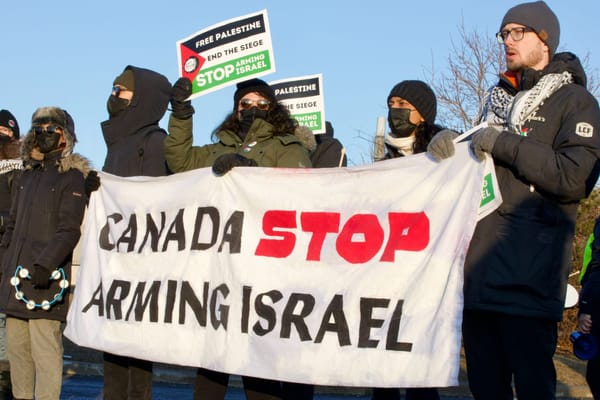
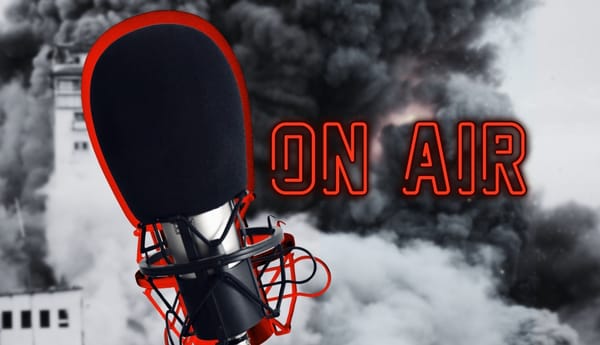
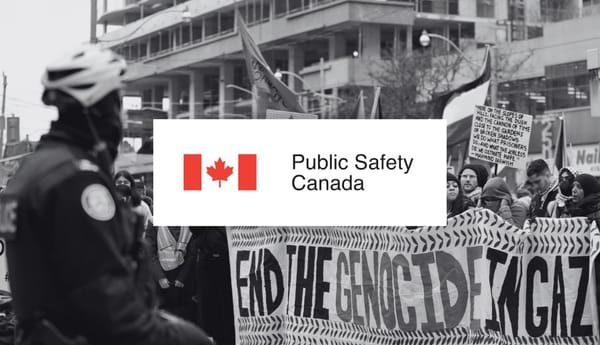
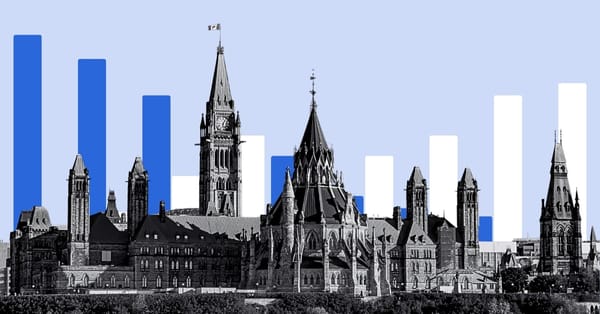
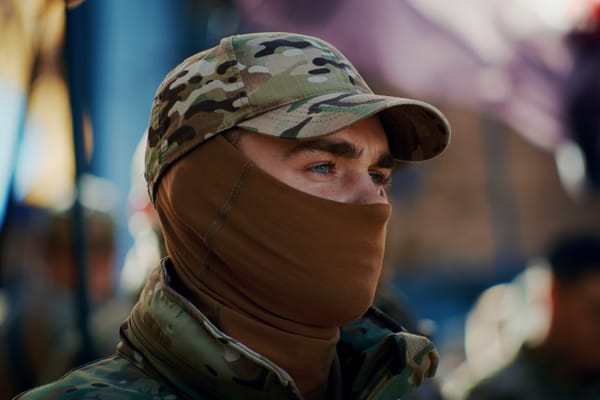
Member discussion